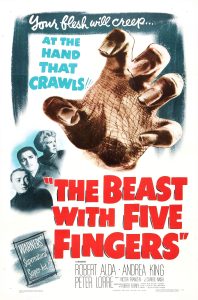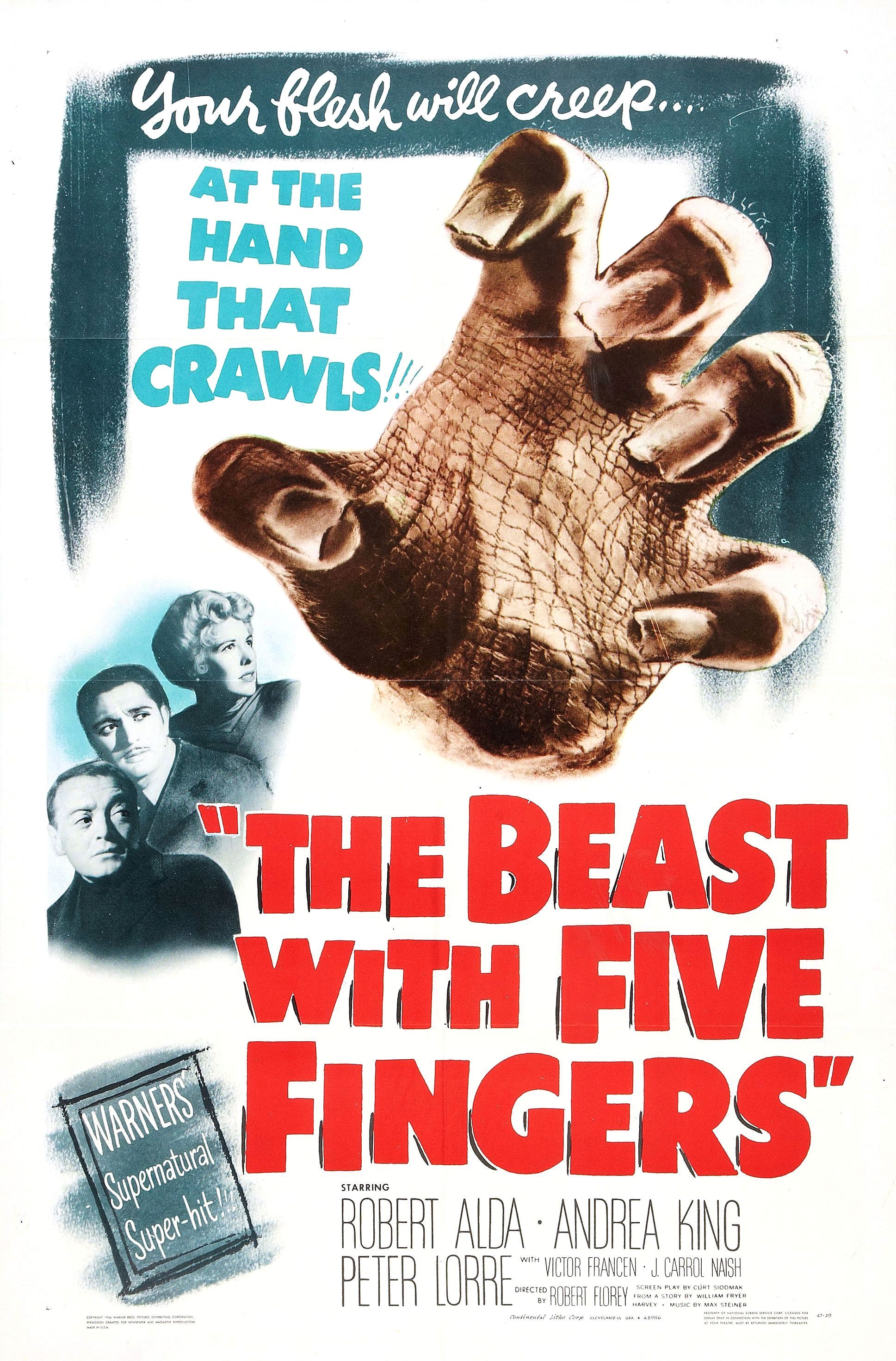
The Beast With Five Fingers predates any other ‘disembodied’ hand film I’ve seen by a good twenty years. Such films include Dr. Terror’s House Of Horror, The Hand, Evil Dead II, Severed Ties, and the two Addam’s Family films and television series. This selection illustrates the gamut of horror film quality, from the delightful Evil Dead II to the atrocious Severed Ties. Happily, their precursor, The Beast With Five Fingers is ‘hands down’ one of the better entries in this sub-genre.
The Beast… is set in an Italian village, home of the successful pianist, Francis Ingram, who resides in a sumptuous villa. Ingram is wheelchair bound as his entire right side is paralysed, and is forced to play piano using his single left hand. His style is suitably heavy and melancholic. He is a haunted figure, heavily reliant on his young nurse to the point of obsession, and fixated on his own death. Therefore, he summons his companions to dinner to witness the signing of his will. Amongst them is his personal secretary Hilary (Peter Lorre), a man with his own obsessions; astrology and the occult. It is not long before the Grim Reaper arrives as a belated dinner guest.
The film’s most prominent actor is Peter Lorre. Lorre’s career in horror fare has seen a slight regression over the years, though not as profound as some of his contemporaries such as Bela Lugosi and John Carradine. In the Thirties, Lorre starred in Fritz Lang’s classic M and the rather good Mad Love. However, by the Sixties he was resigned to playing second fiddle to Vincent Price in horror-comedies The Comedy Of Terrors and The Raven. These two films are reasonable enough but eclipsed by his formative work. The Beast… makes a fitting mid-point between these two eras.
Lorre is an engaging actor, his childlike physique and strange manner always invoke some degree of viewer sympathy no matter how heinous his crimes (cf. M). J. Carrol Naish who plays the affable police inspector (yep, never heard of him before) is also notable but his more comedic moments do lessen the film’s impact.
The special effects used to animate the hand are impressive for their time, although as the film is in b&w this helps mask its inadequacies somewhat. The rubber hand in Dr. Terror’s House Of Horror is pitiable in comparison, and that was made twenty odd years later. The interplay between Lorre and the hand as he alternatively soothes and struggles with it are reminiscent of Ash’s plight in Evil Dead II.
*spoliers*
The majority of the players seem primarily motivated by avarice. It is somewhat surprising then that the final bodycount is so low. A modern horror would have casually knocked off such ‘sinners’ with glee. Perhaps, this highlights a rift between ‘vintage’ and modern horror. The vintage film has a more human approach to its characters, although they do suffer in terms of danger and scares, they do not die. The usual modern approach is to emphasise the killings, the characters are just fodder for the killer’s and the audience’s whimsy. Of course this reasoning parallels the change in audience expectation and tolerance with time, and also what the changes the filmmakers could get away with in terms of censorship and ‘decency’.

